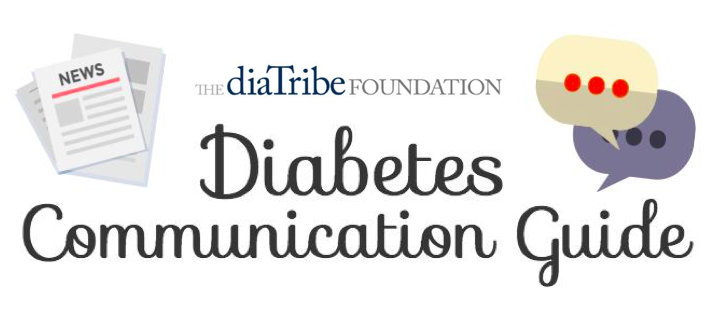How to Talk About Diabetes
By Gwen Strasberg and Rachel Soong
Approaching the conversation, words and phrases to use, and more!
 In order to understand how having diabetes plays a role in both a personal and a professional setting, diaTribe Jr. STEM Associate Gwen was lucky enough to interview Dr. Korey Hood, a distinguished clinical psychologist at Stanford University. Dr. Hood was diagnosed with type 1 diabetes when he was 25 years old and has since done extensive research on the psychological implications that accompany diabetes.
In order to understand how having diabetes plays a role in both a personal and a professional setting, diaTribe Jr. STEM Associate Gwen was lucky enough to interview Dr. Korey Hood, a distinguished clinical psychologist at Stanford University. Dr. Hood was diagnosed with type 1 diabetes when he was 25 years old and has since done extensive research on the psychological implications that accompany diabetes.
Also be sure to check out diaTribe’s Communication Guide for talking about diabetes below!
Interview with Dr. Korey Hood
Gwen Strasberg: What stigmas around diabetes still need to improve?
Dr. Korey Hood: I think that for individuals with type 2 diabetes, the stigma that they often experience the most is that they did this to themselves – things like, “you didn’t watch your weight” and “you didn’t exercise.” There are many people with type 2 who have healthy lifestyles. There is a robust genetic contribution to the onset of type 2 diabetes for many – that is often not seen or known – and that contributes to the stigma.
With type 1, a lot of the management tasks can be very hidden. You can do things discreetly in the bathroom or at home, and sometimes the stigma is thinking that it’s relatively easy to take care of or that it really isn’t a lot of work. What people without diabetes miss is the large mental burden of having to think about it and worry about it.
GS: How do you think the world can get better at viewing diabetes as a surmountable challenge?
KH: I think that it starts with a general philosophy that diabetes isn’t going to limit what you’re going to be able to do – you just have to be more prepared. I think that is a philosophy that can be pushed more by healthcare providers, school administrators, and really, everybody.
GS: How do you prefer that colleagues or friends approach a conversation with you about your diabetes?
KH: I’m of the opinion that the person with diabetes should always have the right to lead those conversations, and if they don’t want to talk about it, then the information doesn’t have to be shared. I generally give relatively small amounts of information and let people ask questions from there. If I say I have type 1 diabetes, that’s probably where I would leave it and then I’d wait to see if that other person asks questions or wants more information. That’s certainly something that I encourage kids and teens to do. Then they can decide if they want to answer those questions or not.
GS: Do you have any advice for people trying to start a dialogue with a loved one about diabetes?
KH: I think that it’s really helpful in these situations to practice what you’re going to say and to have an idea of the actual words. You can actually practice in front of a mirror; just make sure to really think about it.
The second part is to make sure that you’re having those conversations at a good time. If you just had an argument about diabetes – or anything, really – then that’s probably not the time for this discussion.
The third thing I tell people is to state what they are hoping to achieve. It’s always good to tell people at the beginning of a conversation – especially one about something as important as diabetes – exactly what you’re wanting them to help you with in that situation.
For more information on speaking about diabetes and to people with diabetes, see diaTribe’s Communication Guide:

[Image powered by Piktochart]







